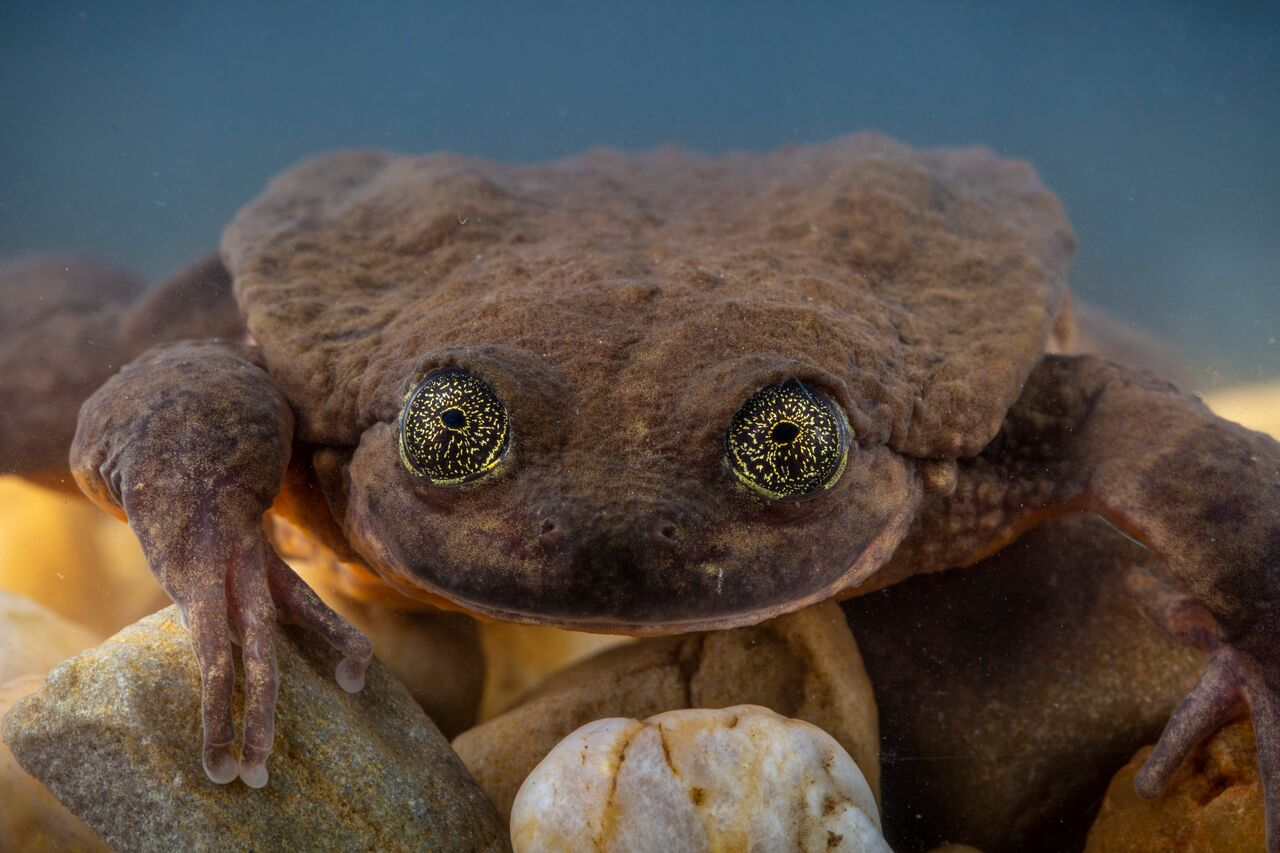Romeo the Water Frog Has Finally Found His Juliet — and Their Love Just Might Save His Species

For 10 long years, a bachelor lived out his days alone, calling out for a mate but hearing only the clicks of cameras and clacks of human shoes at the Museo de Historia Natural Alcide d’Orbigny in Bolivia.
The lonely bachelor, named Romeo, is a sehuencas water frog (Telmatobius yuracare) — and he was the last known frog of his kind. That is, until scientists found his Juliet.
After a decade of coming up empty-handed, scientists with the Global Wildlife Conservation and the Museo de Historia Natural Alcide d’Orbigny finally discovered wild sehuencas water frogs on an expedition to the Bolivian cloud forest, according to a statement from the scientists released today (Jan. 15). They found five of the frogs in total, two of which are females — one the perfect age for Romeo... or so the scientists hope. [Image Gallery: Cute & Colorful Frogs]
All of this comes after Romeo received global attention last year from his Match.com profile (yes, really), which proclaimed, "I'm literally the last of my species...that's why I'm on here - in hopes of finding my perfect match so we can save our own kind."
Scientists used funds that they collected from that online dating profile to go on a mission to Bolivia during its rainy season, the only time of year when these frogs have ever been spotted before. After talking to locals and looking through historical records, scientists homed in on specific areas to look for these frogs — and then searched for the elusive critters beneath rocks and in the water.
Sure enough, after a long day and nearly giving up the search for love they found them.
Quarantined for love
Juliet and the other water frogs are being quarantined in a breeding facility so that they can become accustomed to the "wild" environment of a non-wild facility. The frogs are also being treated for possible deadly infections such as the chytrid fungal infection, which is partly the reason why this species — and many other amphibians — are on the decline.
Get the world’s most fascinating discoveries delivered straight to your inbox.
But Romeo knows none of this. Losing hope, the lonely frog had stopped calling for his Juliet at the end of 2017. Romeo now spends his days swimming and hiding in the shadows of his newly-furnished space from the pressed-up faces of curious tourists.
Romeo has not yet met Juliet — and there is still the chance that they won't like each other. If they don’t click, "We down a tub of ice cream, watch The Notebook, and then get back to it," the researchers said in the statement.
They have a number of different options for pairing among the six frogs, they added. In case everything fails, they will collect sperm and eggs from the frogs so that they can try to fertilize the eggs in vitro.
But if Romeo is anything like his dating profile claims, he's "not picky. I just need another Sehuencas like myself." Indeed, there's no reason why the two frogs shouldn't hit it off.
Still, the scientists will continue to search for more Romeos and Juliets in the wild.
They are hopeful that their efforts will eventually raise the frogs' numbers enough that they can one day be reintroduced into the wild — because there once was a day where Romeo's kind used to thrive at the bottom of small streams, rivers and ponds. Their story can either end here, ravaged by the chytrid infection, climate change, habitat destruction, pollution and the jaws of invasive trout, or continue on anew from the meeting of Romeo and Juliet.
- 40 Freaky Frog Photos
- Album: Bizarre Frogs, Lizards and Salamanders
- Wipe Out: History's Most Mysterious Extinctions
Originally published on Live Science.

Yasemin is a staff writer at Live Science, covering health, neuroscience and biology. Her work has appeared in Scientific American, Science and the San Jose Mercury News. She has a bachelor's degree in biomedical engineering from the University of Connecticut and a graduate certificate in science communication from the University of California, Santa Cruz.



